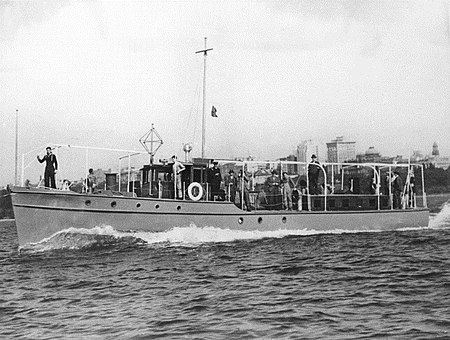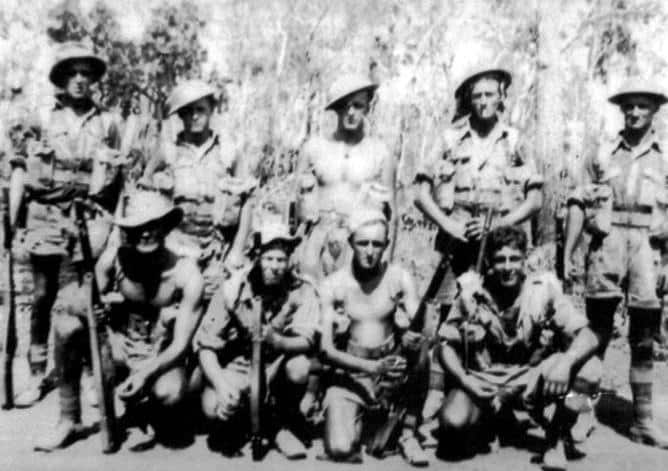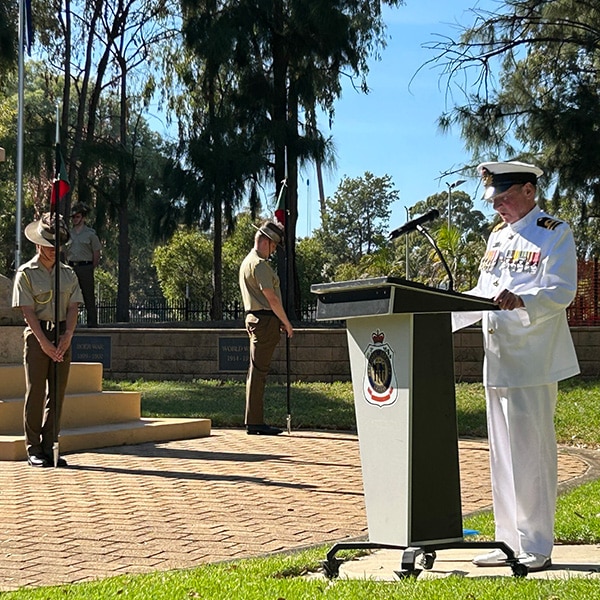Over the course of 2024, I will post a series of articles featuring ‘twelve’ of the Royal Australian Navy’s most outstanding Commanding Officers.
Some of these men served with distinction as junior officers during the First World War, and later in the Second World War. Many commanded capital ships in which history has noted their courage, brilliant ship-handling and outstanding war-time tactics on the high seas.
They were outstanding commanders who for the greater part began their long careers in the NAVY at the Naval College as 13 year-old Cadets.
Osbourne House, near Geelong, Victoria was the interim location of our first Naval College. In 1915 it would relocate to new buildings at Jervis Bay in NSW. However, during the depression the government could not afford to retain the Jervis Bay site so the naval college was transferred to Flinders Naval Depot (south of Melbourne) where it would remain until 1958 before returning to Jervis Bay – and being officially commissioned as HMAS CRESWELL.
In 1911 following the Royal Charter of our NAVY, the Commonwealth Parliament took the decision to establish a naval college to train Australian boys to become Naval Officers. Up until this time, in-fact for many years hence RAN Officers were provided by Great Britain’s Royal Navy. Indeed, right up to the Vietnam War, many Officers continued to be loaned by the Royal Navy.
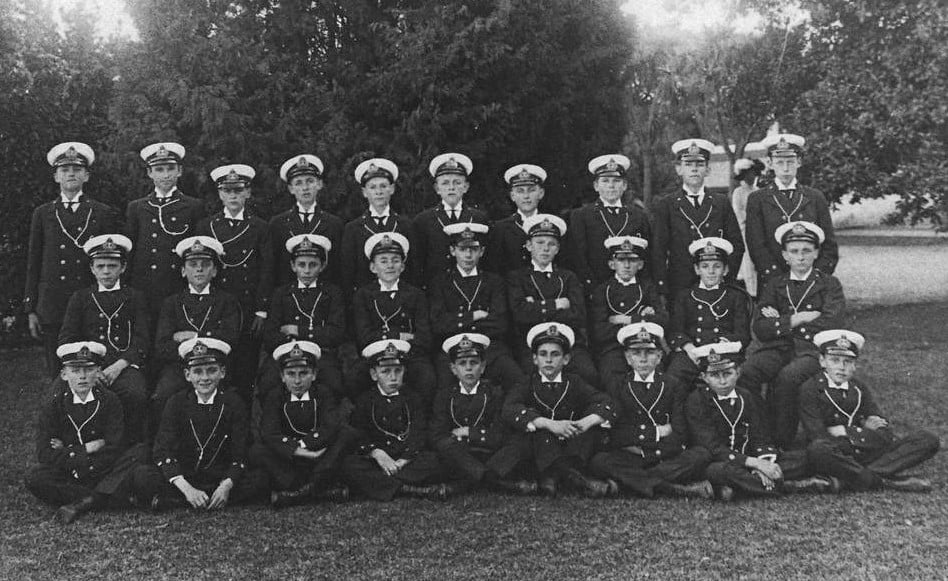
On January 2nd, 1913, the 28 boys selected from hundreds who had applied entered the newly established naval college to begin four years of extensive training. 23 graduated as Midshipmen in December 1916 and following a short leave took up their respective appointments with the Royal Navy for sea-going experience and specialized training. Following their specialized training and promotion to Lieutenant, they would be posted to ships of the Royal Australian Navy.
The first and subsequent intakes of 13 year-old Cadet Midshipmen would see many of them go on to successfully command capital ships during the Second World War, the Korean and Vietnam Wars.
Many of them would also go on to attain FLAG RANK!
(It must also be noted this series of articles focuses on Officers of the Executive Branch as they were the only Officers eligible to be selected for command, as well as the only officers who could ever attain FLAG RANK – Rear Admiral – or higher. Post 1985, this changed, however).
Officers of the Executive Branch were either Navigators, Gunnery Officers, Direction Officers, Anti-submarine Officers, Communications and Hydrographic Officers.
Many served with distinction during World War One, the Second World War, the Korean and the Vietnam Wars.
For the purpose of some simplification, each Officer featured will start with their birth-date (January and subsequent months), and then I will provide a synopsis of their accomplishments during their outstanding Naval careers.

John Augustine Collins
was born in Deloraine, Tasmania, on 7 January 1899. He was the son of the late Dr MJ Collins and Mrs Collins, and a brother of Dale Collins, the Australian novelist. He was one of 28 boys selected in late 1912 to be first Cadet Midshipmen to enter the Royal Australian Naval College when it opened at Geelong in January 1913.
It is recorded that even at that early stage of his career his high intelligence and ability and his qualities of leadership were apparent!
He graduated from the College at the end of 1916, while Britain and her Allies were still at war with Germany, and was sent to England as a Midshipman to serve with the Royal Navy’s Grand Fleet.
It was while he was serving with the Royal Navy that he decided to specialise in gunnery, and in 1923 he distinguished himself by winning the Commander Egerton Memorial Prize, which was founded in memory of Commander FG Egerton RN, who was mortally wounded in 1899 in the defence of Ladysmith. This prize is awarded annually to the naval officer of the Royal Navy, or any Navy of the Commonwealth, who, when qualifying as a gunnery lieutenant in England, wins the highest marks in practical gunnery.
As later events proved in the Mediterranean during the Second World War, Admiral Collins’ specialised knowledge of gunnery would equip him well.
After his return to Australia, he held various appointments as a gunnery officer, including the appointment of Squadron Gunnery Officer, in which he was responsible for the whole Squadron’s gunnery training and efficiency.

Later he commanded the destroyer HMAS Anzac (I). He then completed a Naval Staff Course, followed by two years at Admiralty in War Plans, then he became Assistant Chief of Staff at Navy Office, Melbourne.
When the Second World War began as well as this appointment, he also held the post of Director of Naval Intelligence. He went to sea again in November 1939, this time in command of HMAS Sydney (II). He did not know then that his ship was to bring greater renown upon himself by sinking Bartolomeo Colleoni in the Mediterranean than her famous namesake won in the war of 1914-18 by destroying the German raider Emden at Cocos Island.
Apart from sinking Bartolomeo Colleoni, HMAS Sydney chased her sister ship, Giovanni Delle Bande Nere, until the Italian vessel, having greater speed, escaped.

Sydney won numerous other honours. In bombarding Bardia in the middle of 1940 she was the first British warship to open up an attack on an Italian colony during the Second World War, and she was the first vessel to make her way through the heavily mined Straits of Otranto. She sank the Italian destroyer Espero and took part in several other engagements, including the Battle of Calabria. It was for his ability in commanding HMAS Sydney in the Mediterranean and especially for his destruction of Bartolomeo Colleoni that
Captain Collins was awarded the Companion of the Order of the Bath (CB).
Shortly after his return to the Commonwealth in HMAS SYDNEY he was appointed Chief of Staff to Commander-in-Chief, China. For his work in this post, he was mentioned in dispatches.

Later he became Commodore Commanding the British Far Eastern Squadron which was based on Java, with the rank of Commodore 2nd Class. It was in recognition of the work he did then that Queen Wilhelmina of the Netherlands conferred upon him the honour of Commander in the Order of Oranje Nassau.
In 1943 Collins went to England to assume command of the cruiser HMAS Shropshire which the British Government had presented to the Commonwealth Government to replace HMAS Canberra after she was lost during the Battle of Savo Island. HMAS Shropshire, under the command of Collins, took part in the fighting throughout the Pacific. In June 1944, in further recognition of his valuable services, he was made a Commodore 1st Class and given command of the Australian Squadron which at that time was operating with the US 7th Fleet.
On 21 October 1944 while taking part in the American landings in the Philippines, Collins’ flagship HMAS Australia (II) was attacked by a Japanese kamikaze aircraft which struck and severely damaged the bridge. The captain of HMAS Australia (Captain EFV Dechaineux) and thirty others were killed, and sixty-four, including Collins, were wounded.
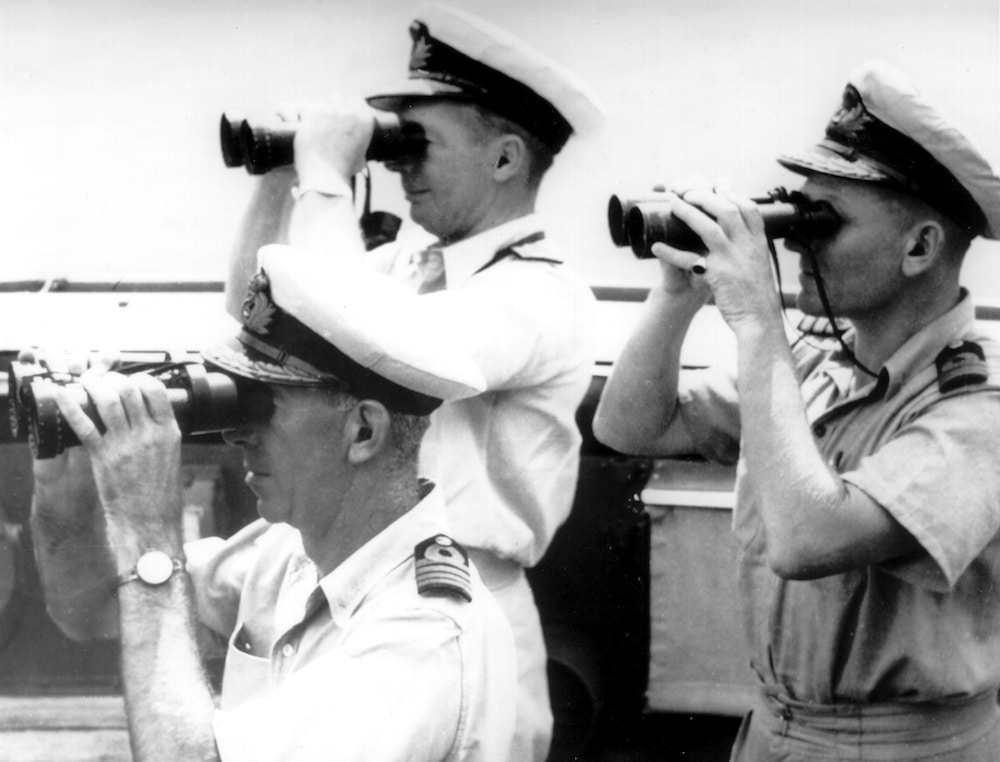
Commodore Collins was evacuated to Australia and for his work in the South West Pacific was made an Officer of the United States Legion of Merit.
After recovering from his injuries, Collins was temporarily appointed Naval Officer-in-Charge, Fremantle. In July 1945 he resumed command of the Australian Squadron in HMAS Shropshire and was present in Tokyo Bay in August 1945 when the Japanese capitulated. He was later present in USS Missouri during the signing of the instrument of surrender in September. In November 1946, he relinquished command to Commodore HB Farncomb and left for England to attend the Imperial Defence College.
Soon after Collins had proceeded to England, on 7 January 1947, the Minister of the Navy announced that both he and Commodore Farncomb were to be promoted to the rank of Rear Admiral; and thus became the first graduates of the RAN College to attain Flag Rank.
On 24 February 1948, Collins was appointed First Naval Member of the Australian Commonwealth Naval Board and Chief of the Naval Staff, a post which he retained until he retired on 23 February 1955.

He was promoted Vice Admiral on 10 May 1950, and in the King’s Birthday Honours List of 1951 he was made a Knight Commander of the Order of the British Empire (KBE).
During his 42 years of Naval Service, Admiral Collins spent 28 years at sea.
This would be unheard of in today’s NAVY!
Admiral Collins later served as Australia’s High Commissioner to New Zealand between 1956-1962.
Sir John died peacefully aged 90 on 3 September 1989 and was commemorated with full Naval honours.
In recognition of his service to the Royal Australian Navy the Collins Class Submarines are named in his honour.


